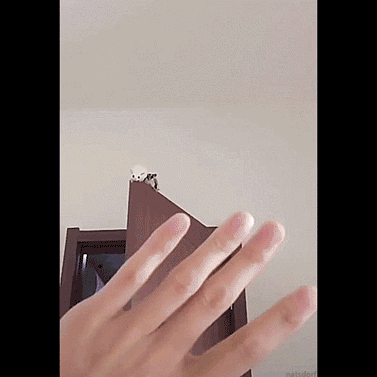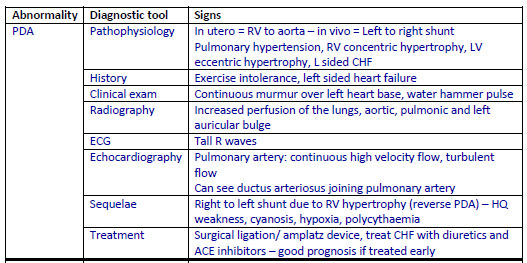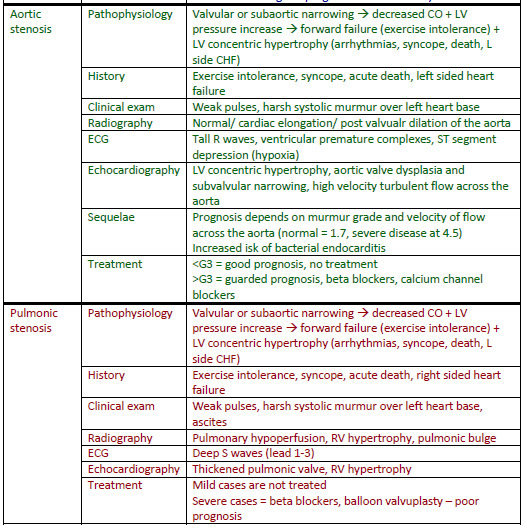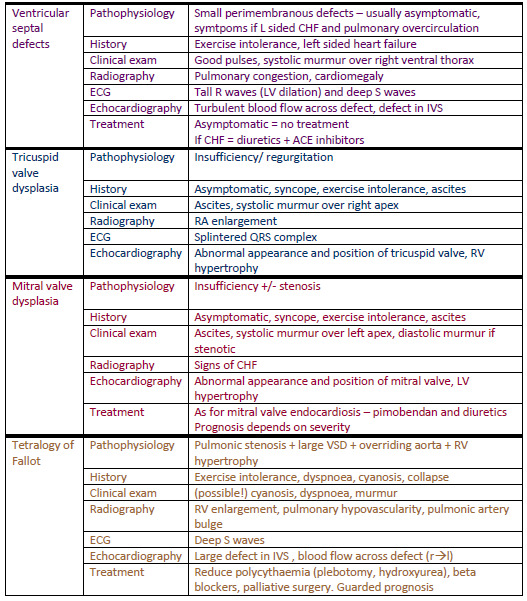22 year old vet tech//He/him pronouns//Ask me about my cats
Don't wanna be here? Send us removal request.
Text
Sugar Glider Medicine 101
Sugar gliders are adorable, unique, and complicated little animals. There’s still a lot we don’t know about them and their care. Few published resources exist for these cute little guys.

Keep reading
#gif#I also researched sugar gliders for a few years#but I can't rescue any until I have more room#and time#and money 😅
114 notes
·
View notes
Link
Rats drive tiny cars to reduce stress
17K notes
·
View notes
Text

He saw a dog. The dog he’s been living with his whole life, but outside.
Mind: blown
825 notes
·
View notes
Text
Meet Corsica's New Mammal Species, The 'Cat-Fox’!

A new mammal has been identified on the French island of Corsica, looking like a cross between a cat and a fox. It is hoped that this “cat-fox"—which has been legendary amongst locals for generations—can now be formally identified.

The large cat had been a legend in Corsica for years, before one was accidentally caught in a chicken coop in 2008 in Olcani in the north of the French island. Quoted in Metro, Chief Environmental Technician of the French Forest and Hunting Office (ONFCS), Pierre Bendetti said:
“We believe that it’s a wild natural species which was known but not scientifically identified because it’s an extremely inconspicuous animal with nocturnal habits. The cat-fox is part of our shepherd mythology. From generation to generation, they told stories of how the forest cats would attack the udders of their ewes and goats.”
The cat is different from a normal domesticated cat in a number of small ways. It is known in Corsican as the “ghjattu volpe”, the “chat renard” in French, and the “cat-fox” in English. RFI, the French current events radio broadcaster, describes it as being longer than an average cat (measuring around 90 cms) with larger ears, longer canine teeth and a black tuft on the end of its tail.

The centre has spent over 10 years trying to obtain more information on the animal. It used infrared traps to obtain hair, which established that the DNA of the “cat-fox” is different to the European wildcat on the continent. RFI reports that the ONCFS were then able to trap 16 of the creatures which live in the Asco Valley up to 2,500 meters above sea level.
The captured cats were tagged with electronic chips so that the centre could follow their movements; many of which have formed the basis for the study which was presented to the public this week. Benedetti’s aim is to see the species recognised and then protected.

The Corsican “cat-fox” is the latest animal to be discovered but there are other regular discoveries still being made, even in the mammal world. In 2005, a similar creature to the Corsican “cat-fox” was discovered in Borneo. In 2010, the BBC reported the discovery of a new carnivorous mongoose-like creature in Madagascar. In 2013, the first carnivorous mammal —olinguito (pronounced oh-lin-GHEE-toe)—to be found in the Americas for 35 years, was discovered in the cloud forests of Colombia and Ecuador.
sᴏᴜʀᴄᴇ﹕ꜰᴏʀʙᴇs.ᴄᴏᴍ
29K notes
·
View notes
Video
tumblr
And one more. I think that this video is adorable, but I get the idea it might be less so to somebody who doesn’t like baby rats. This was their immediate reaction to me putting the plastic flowers down on the bed.
55K notes
·
View notes
Text






I'm over here screaming that snakes need enrichment, and this is my friend's HERMIT CRAB set up.
It's a 55 gallon with an added section to the top, adding more than double the space. Last photo includes the fridge for size comparion.
My favorite features are the hammock with a variety of shells, tons of climbing space, and tunnels!!
Shes also pursuing her PH D in neurology so she knows how important enrichment is.
319 notes
·
View notes
Text

This is random but I wanted to show off my vivarium I converted from an old fish tank, Baz loves it

113 notes
·
View notes
Note
Hey just wondering but what exactly is a fear free clinic? I tried looking online but I'm still not really sure what it is
A fear free certified clinic is one whose staff has all gone through Fear Free training. They’ve met many benchmarks to say their clinic is committed to Fear Free practices.
Fear Free is a concept that was initially marketed by Dr. Marty Becker D.V.M. It puts the focus on the patient’s emotional health during vet visits. Parents want a pediatrician who uses techniques to distract and reward their child for vaccination, not someone who calls a nurse in to pin their child to a table so they can be quickly vaccinated and tells the child to not be dramatic. Your kid would absolutely hate that place and you’d change pediatricians if you had the latter, right?
Fear Free is very different than how veterinary medicine has been done traditionally (it used to be just hold the patient down even if they’re so stressed that they might bite, defecate, release their anal sacs, scream or all of the above. Drugs were for animals you just couldn’t get in the door safely).
Examples of Fear Free techniques:
Using treat trails to get patients on a scale instead of forcing a frightened animal
Using cat only rooms and separate waiting rooms so cats are not exposed to dogs
Routinely scoring a patients signs of fear, anxiety, and stress. This means we’re recognizing the yawning, lip licking, cat becoming the immovable loaf, and so much more.
Utilizing calming pheromones in all exam rooms
Prescribing antianxiety drugs when signs progress beyond mild rather than wait until we have a screaming, biting patient.
Using positive reinforcement for even things like a scared pet sitting in the room with staff.
Making time for Happy visits. Client and patient show up, patient gets treats, they leave. It helps to remove the association of vet office = restraint + pain.
Making sure our patients have adequate pain control. Pain is a huge fear factor. If our patients can’t be distracted by desensitization techniques, or just had surgery, it’s important to manage their pain well or they make negative associations.
Client education on asking and rewarding their pet for good behavior, not demanding it and adding corporal punishment.
Making positive kitten/puppy visits to start off on the right track. Since starting Fear Free techniques, I’ve had amazing luck with kittens who don’t even know they’re getting a vaccine with almost no restraint. Then it’s all about the snuggles, the food, the toys, and not the hard hands and needles.
There’s a lot of other examples and these are just a few off the top of my head. Yes, it’s extra work, but it makes a huge difference in our patients. A Fear Free visit actually starts at home! You can read more at the link below.
Fear Free Website
152 notes
·
View notes
Photo






Bioactive mouse enclosure by Shelley Taylor.
155 notes
·
View notes
Video
tumblr
thedragonwoodconservancy on ig
258K notes
·
View notes
Link
Dealing with poop is a major part of raising children, regardless of the species. But it’s especially important for naked mole rats. A mom’s poop actually encourages other females in her colony to help with her child care, new data indicate.
Naked mole rats are small, nearly hairless rodents native to East Africa. They live in large underground colonies. A single queen in each colony gives birth to a few dozen pups each year. But she doesn’t care for those babies alone. Other females help her out. These nannies get their cues on when they’re needed from their diet — the queen’s poop. That’s the finding of a new study.
Many females share a colony. Only one of them — the queen — reproduces. Ovaries, a reproductive organ, never develop in the other females. So they can’t bear young. Their job, most of the time, is to find food and defend the colony. But when a queen becomes a mom, those other females assume an additional role: babysitter. They groom the babies and keep them warm. They also respond to crying and make sure the pups stay in the nest.
Explainer: What is a hormone?
In other animals, hormone changes during pregnancy usually serve as cues for such nurturing. Except for their queen, female naked mole rats don’t experience those changes. Yet they still care for her babies.
Kazutaka Mogi works at Azabu University in Sagamihara, Japan. This developmental biologist was part of a team that explored what might cause these females to become her brood’s babysitters. They focused on one of this species’ most unusual foods: dung.
Feces contain partially digested food. That’s why naked mole rats regularly eat each other’s poop. It allows these rodents to extract additional nutrients initially left behind in the wastes. The feces of a pregnant queen contain high levels of one female sex hormone — estradiol (Ess-truh-DY-awl).
Mogi’s group looked to see if it was what made the other females act like moms.

The poop of a queen naked mole rat contains the hormone estradiol. Eating poop laced with that hormone appears to encourage other females to care for her young. CREDIT: Ltshears/Wikimedia Commons
They started by collecting poop pellets from nonpregnant queens. They added estradiol to half of the pellets. This would mimic those shed by pregnant mole rats. Then the scientists fed plain and hormone-treated pellets to female mole rats for nine days.
Those eating the treated feces excreted more estradiol in their own dung. That showed that dining on the hormone-packed poop can change her own hormone levels. And mole rats that had done this were more responsive to a pup’s cries than were females that ate poop without the hormone boost.
Mogi studies how animals change and grow at different stages of their lives. The queen’s poop may not be directly shared with the whole colony, he says. Instead, those that spend the most time in her nest are probably the ones that eat her scat. They may, in turn, pass estradiol down to other colony members through their own poop, he says.
His team shared its findings August 27, 2018 in the Proceedings of the National Academy of Sciences.
162 notes
·
View notes
Photo




Cardiac murmurs found in puppies and kittens. Low grade murmurs over the left heart base in a very young animal are usually innocent and will resolve spontaneously by 12 weeks old. Other murmurs may be slightly more concerning.
207 notes
·
View notes
Link
Cats may have “attachment styles” that resemble those of people. And contrary to cats’ aloof reputation, most felines form deep, secure bonds with their owners, researchers say.
Attachment theory, developed in the 1950s, suggests that early in life, people predominately form one of four styles of attachment: secure and three types of insecure called ambivalent, avoidant or disorganized. Secure attachers are comforted by a caretaker’s presence; ambivalent tend to be clingy and overdependent; and avoidant seem disinterested. Disorganized attachers show a mix of contradictory behaviors, seeking attention and then resisting it.
Now a study finds that those four attachment styles show up in cats. Perhaps surprisingly to those who think cats don’t care about us, 64 percent of felines were identified as secure. Roughly 30 percent were ambivalent, and the rest were mostly avoidant. That mirrors the attachment styles seen among human infants and other animals, including other primates and dogs, the researchers report September 23 in Current Biology.
The findings indicate that cats have a greater flexibility and depth of social relationships than previously thought. “It suggests that some cats are bonding with us as caretakers,” says coauthor Monique Udell, an animal behaviorist at Oregon State University in Corvallis.
In their version of a secure base test — a type of psychology experiment typically used to study the relationship between a parent and infant — the researchers set up a nondescript room, bare except for a few toys. The team instructed each owner to sit in the middle of the room and ignore his or her kitten for two minutes, not making eye contact or speaking unless the cat stepped inside a circle outlined on the floor. Owners were allowed to interact with their pet if the cat entered the circle. Then, the owner left the cat alone in the room for two minutes, before re-entering and again sitting inside the circle.

An owner and her cat participate in an experiment to determine if cats have attachment styles like people’s. The cat is curious and playful, signs of a secure attachment style, researchers say. CREDIT: K. VITALE/OREGON STATE UNIVERSITY
The researchers tested 79 kittens and their owners and recorded each pair’s interactions on camera. Based on how the cat reacted to their owner’s return, the scientists were able to assign 70 of the felines with an attachment style.
Kittens with a secure style greeted their owners warmly, rubbed against the person or allowed physical contact, before going to explore the room or play with a toy, the team found. Cats with the insecure-ambivalent attachment style sat in their owner’s lap and demanded constant attention, while those that were insecure-avoidant hid or ran away from physical contact.
“But it doesn’t mean insecure cats aren’t attached to their owner,” says Kristyn Vitale, a graduate student studying animal behavior also at Oregon State University. “I think there’s this idea that cats should be glued to their [owner’s] side all the time, but that’s not really a healthy behavior.”
Keep reading
2K notes
·
View notes
Photo


The finished stand! Holly is currently tearing off the medical tape because she has a weird hatred of it. I’m not sure if she’ll lose interest. If she doesn’t, I’m thinking of wrapping it in string of some sort. However, in the meantime, this it is!
80 notes
·
View notes
Text




Sebastian absolutely loves all those fringey bird toys, and uses the little paper shreds to line his nests. I figured free is always better and made something sort of similar. I simply cut fringes in four toilet paper rolls, squished three into the fourth one, and strung it up to make him work a little bit. The hardest part really was stringing it up, I had to use a drill to get a big enough hole across the whole thing.
Sebastian loves nesting related enrichment more than food related enrichment, so I tend to lean more towards that sort of thing with him.
283 notes
·
View notes
Note
What is your opinion on people who say birds shouldn't be pets?
If we’re talking parrots specifically, I’m one of those people.
Parrots just do not thrive in the standard captive environment, really the most we can hope to do is provide as much enrichment as we can to mimic their wild environments and natural behaviours to prevent countless stress behaviours. Parrots pluck, toe tap, break their beaks trying to chew cage bars, are frequently nutrient deficient, and often have weaker hearts, lungs and immune systems from being in captivity without the right environments to thrive.
Parrots aren’t a domesticated species and they simply do not thrive in our homes. We can not provide enough room for flight, enough birds for socialization with enough space for them to feel safe doing so, we can not provide the lifestyle these birds really need to be as healthy as they should be. We can do our best but at the end of the day when we’re breeding a species that more often than not suffers in our environments it doesn’t make sense to keep breeding them. If the closest we can get to optimum care is just trying to reduce constant stress then that animal isn’t thriving with us.
There’s plenty of birds that do thrive in our homes, pigeons, chickens, even finches and canaries are all extremely loving, trainable, and interactive birds that aren’t all that different than parrots. They can all be taught parlour tricks, can enjoy human interaction, many can sing sweet songs.
Keeping parrots as pets that are already stuck in the trade? Of course, they can’t be released, they need someone who will at least give their all to lead a good life. But consistently bringing more parrots in to a world that isn’t suitable for them? It’s more selfish than anything really.
3K notes
·
View notes
Video
tumblr
Ducklings: MOMOMOMOMOMOMOMMMMM
Mama: It’s okay. Just… Jump
254K notes
·
View notes